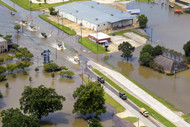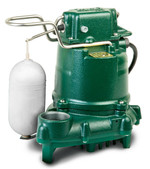Floods can be incredibly devastating, wreaking havoc on your home and everything that makes it feel safe and secure. From the destruction of cherished belongings to the disruption of daily life, the impact of flooding can be overwhelming.
In light of the current wet conditions and the prevalence of flooding across the country, we want to extend a helping hand in safeguarding your home from this natural disaster, both now and in the future. Our goal is to provide you with the knowledge and resources necessary to minimize the damage caused by flooding and, more importantly, to prevent it from occurring in the first place.
By taking proactive measures and implementing effective strategies, you can fortify your home against the destructive forces of floods. From simple steps such as ensuring proper drainage to more advanced techniques like installing flood-resistant materials, there are numerous ways to strengthen your home's resilience.
We understand the anxiety and uncertainty that floods bring, but rest assured that we are here to support you every step of the way. Together, we can create a safer and more secure living environment, where the threat of flooding is minimized and your peace of mind is restored. Remember, we're not just here to help – we're here to empower you with the knowledge and tools needed to protect your home and your loved ones from the devastating effects of floods.
How to Protect Your House From Floods:
- There are several highly effective systems available that provide comprehensive protection for your entire house against leaks and pipe bursts, serving as the first line of defense against any type of flood. One such system is Leaksmart, which not only detects and stops pipe bursts by shutting off the main water supply, but also includes sensors that accurately pinpoint the source of the leak. This advanced feature gives you ample time to take immediate action and mitigate any potential damage if flooding starts to enter your house.
- Another crucial step in flood prevention is to regularly clean your catch basin or storm drain, ensuring that it is free from debris or garbage. By doing so, you allow water to flow into the drain more efficiently, significantly reducing the chances of flooding.
- Investing in a reliable sump pump, as well as a backup sump pump, is highly recommended. A sump pump is specifically designed to remove accumulated water from a water-collecting sump basin, typically found in the basements of homes. Having a backup sump pump provides an additional layer of protection, especially during heavy rainfall or power outages.
- Maintaining clear gutters is vital for proper drainage. Regularly remove leaves and debris from your gutters to ensure that water can flow freely. Additionally, it is essential to check that your gutters are positioned to drain away from your home, preventing water from seeping into your foundation.
- For enhanced waterproofing, consider applying specialized coatings and sealants to the foundation of your house. These protective measures create an extra barrier, effectively safeguarding your home against water intrusion.
By implementing these detailed steps, you can significantly reduce the risk of flooding and enhance the overall protection of your home.
How to Limit Damage After Food has Started:
- If you suspect that a leak is causing the flooding, it is crucial to promptly turn off the water supply to your house. This immediate action can help mitigate further damage and prevent the situation from worsening.
- To effectively safeguard your home from flooding, consider using sandbags to seal any gaps in doors, windows, or other openings that may potentially allow water to seep in. By taking this precautionary measure, you can significantly reduce the risk of water intrusion.
- When dealing with flooding, it is advisable to relocate your belongings to an elevated space. Doing so will help protect your valuables from being damaged by floodwaters and minimize potential losses.
- In the event that floodwater encroaches on any part of your electrical system, it is crucial to shut off your electricity. During a flooding incident, it is always safest to assume that every wire or electrical appliance is live, as this can help prevent electrical hazards and ensure your safety.
- Regularly checking the functionality of your sump pump is essential. Ensure that it is in good working condition and turned on to effectively remove excess water and prevent flooding in your basement or low-lying areas.
- To manage the influx of water, consider using a shop vacuum or bilge pump to remove water as it enters your property. Remember to drain the water away from your home to prevent further water damage or saturation.
- Documenting any flooding that occurs is crucial for insurance purposes. Take photographs or record videos to effectively document and support your claim with your flood insurance provider. This evidence can be invaluable when seeking compensation for the damages caused by the flood.
How to clean up after a flood:
- Use a shop vacuum or bilge pump to effectively remove any standing water from the affected areas. This will help prevent further damage and minimize the risk of mold growth. Once the water is removed, it is crucial to ensure that all moisture is eliminated. Consider using air dryers or fans strategically placed in the affected areas to aid in the drying process.
- In addition to removing standing water, it is important to remove any articles that have been submerged. Porous or absorbent materials like furniture, carpet, and curtains should be taken to a professional cleaning company or disposed of properly. This is not only to address the water damage but also to mitigate potential health risks. Floodwater often contains contaminants and elements that can pose dangers even after the water has receded.
- Don't forget to shovel out and remove any debris and mud that may have been brought in by the floodwaters. This step is crucial in restoring the affected areas and ensuring a clean and safe environment.
- Once the damaged materials have been removed and the home is dry, it is essential to thoroughly check for mold on walls, floors, and other surfaces. Mold can be easily spotted by looking for spotting or dark blotches, typically with a green or black appearance. However, it is also important to consider that mold or mildew might have started to grow in non-visible places, such as behind drywall or on the subfloor. If you suspect the presence of mold or mildew, it is advisable to call an inspector to assess the situation and take appropriate measures.
- Lastly, it is crucial to disinfect all surfaces in your home to ensure a clean and hygienic environment. This step will help eliminate any remaining contaminants and prevent the growth of harmful bacteria or microorganisms.
While floods can be devastating and unpredictable, taking the aforementioned precautions will give you a fighting chance. Leak detection systems, clearing and maintaining gutters, clearing catch basins, and other steps may be costly, time-consuming, or both. However, the costs to put your house back together after a flood will be far higher.
Most importantly, stay safe out there!




